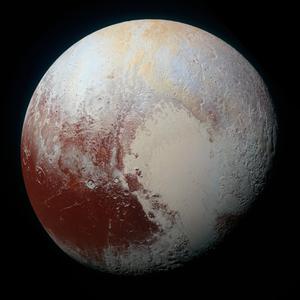Glossarbegriffe: Zwergplanet
Description: Ein Zwergplanet ist ein Himmelskörper mit den folgenden Eigenschaften: Er umkreist die Sonne. Seine Masse ist groß genug, um eine nahezu runde Form zu bilden. Er ist kein Mond, und hat die Umgebung seiner Umlaufbahn nicht freigeräumt. Zwergplaneten befinden sich üblicherweise in Regionen, die aus ähnlichen Körpern bestehen: beispielsweise im Asteroidengürtel oder im Kuipergürtel. Im Allgemeinen sind Zwergplaneten kleiner als der Planet Merkur und bestehen aus Gestein und Eis. Es hängt von der Position im Sonnensystem ab, wie viel Eis im Verhältnis zum Gestein ein Zwergplanet enthält. Der bekannteste Zwergplanet ist Pluto. Der Begriff Zwergplanet ist nicht zu verwechseln mit dem veralteten Begriff Kleinplanet.
Zugehörige Glossarbegriffe:
See this term in other languages
Term and definition status: The original definition of this term in English have been approved by a research astronomer and a teacher The translation of this term and its definition is still awaiting approval
The OAE Multilingual Glossary is a project of the IAU Office of Astronomy for Education (OAE) in collaboration with the IAU Office of Astronomy Outreach (OAO). The terms and definitions were chosen, written and reviewed by a collective effort from the OAE, the OAE Centers and Nodes, the OAE National Astronomy Education Coordinators (NAECs) and other volunteers. You can find a full list of credits here. All glossary terms and their definitions are released under a Creative Commons CC BY-4.0 license and should be credited to "IAU OAE".
Zugehörige Medien
Pluto
Bildnachweis: NASA/Johns Hopkins University Applied Physics Laboratory/Southwest Research Institute credit link
License: PD Public Domain icons
Ceres
Bildnachweis: NASA / JPL-Caltech / UCLA / MPS / DLR / IDA / Justin Cowart
License: CC-BY-2.0 Creative Commons Namensnennung 2.0 Generic icons










